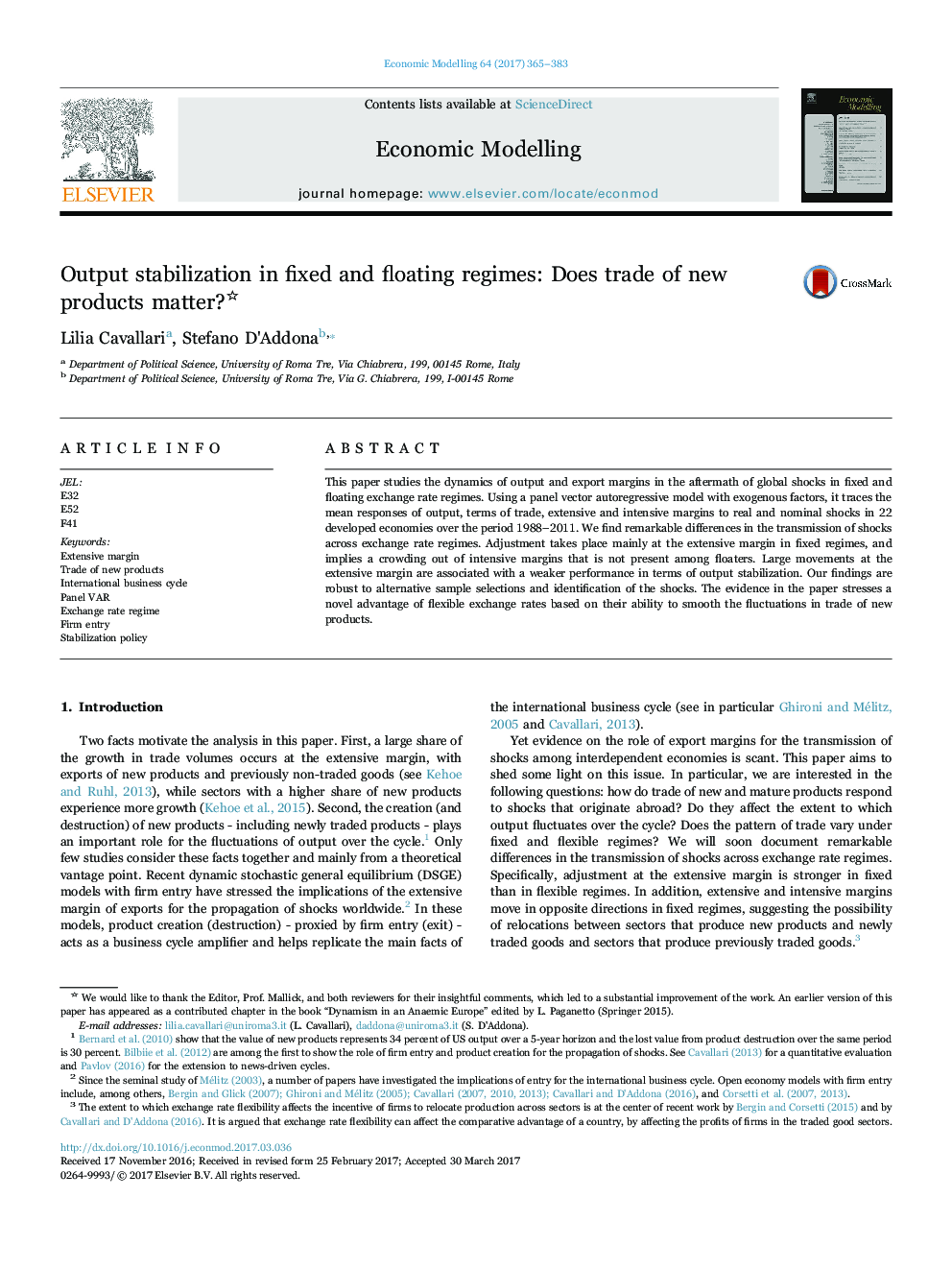| Article ID | Journal | Published Year | Pages | File Type |
|---|---|---|---|---|
| 5053158 | Economic Modelling | 2017 | 19 Pages |
Abstract
This paper studies the dynamics of output and export margins in the aftermath of global shocks in fixed and floating exchange rate regimes. Using a panel vector autoregressive model with exogenous factors, it traces the mean responses of output, terms of trade, extensive and intensive margins to real and nominal shocks in 22 developed economies over the period 1988-2011. We find remarkable differences in the transmission of shocks across exchange rate regimes. Adjustment takes place mainly at the extensive margin in fixed regimes, and implies a crowding out of intensive margins that is not present among floaters. Large movements at the extensive margin are associated with a weaker performance in terms of output stabilization. Our findings are robust to alternative sample selections and identification of the shocks. The evidence in the paper stresses a novel advantage of flexible exchange rates based on their ability to smooth the fluctuations in trade of new products.
Keywords
Related Topics
Social Sciences and Humanities
Economics, Econometrics and Finance
Economics and Econometrics
Authors
Lilia Cavallari, Stefano D'Addona,
